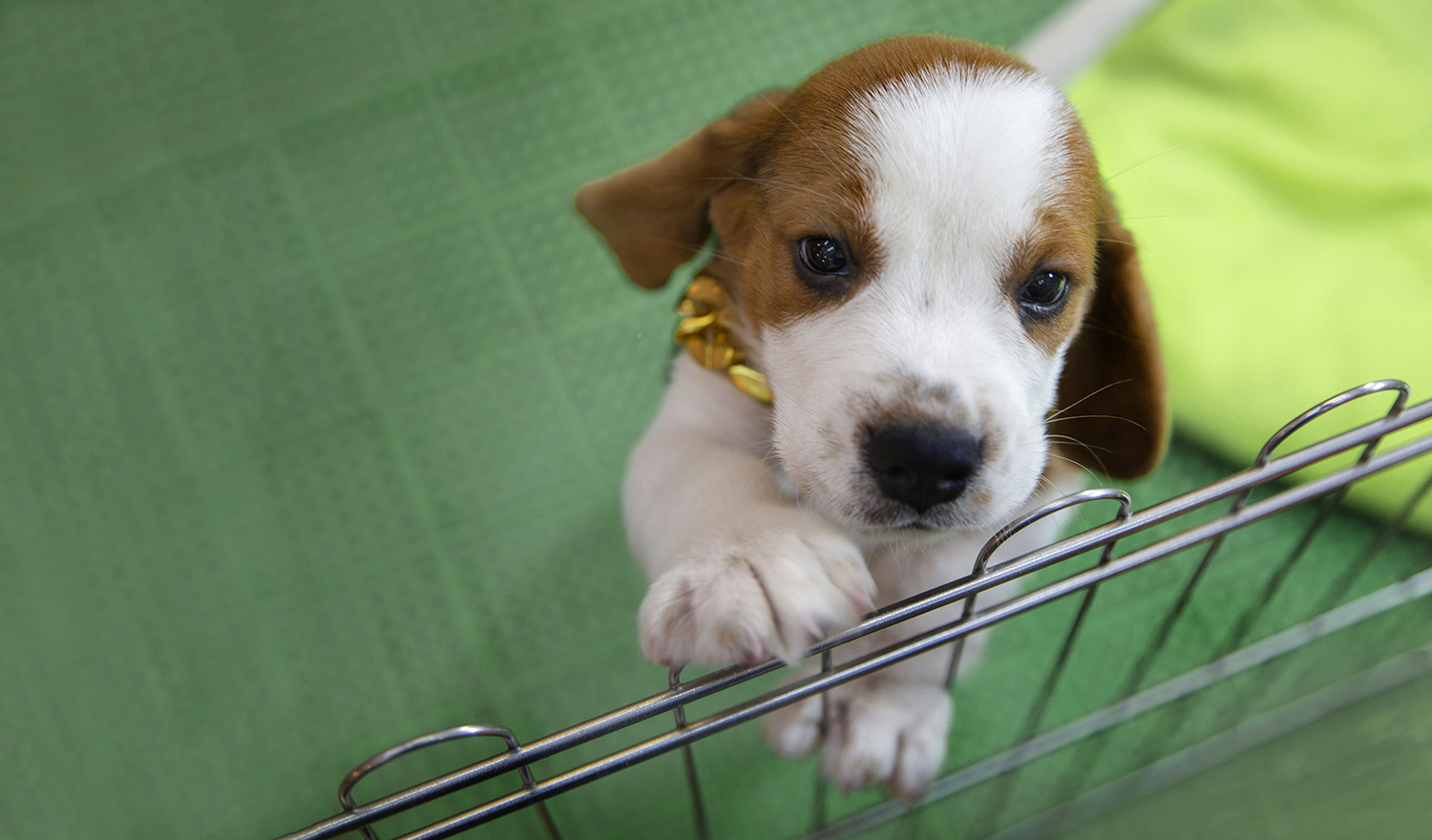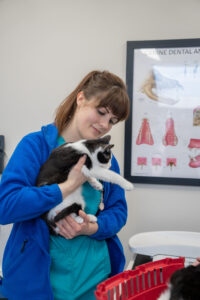When welcoming a new puppy into your family and introducing them to an environment with unfamiliar scents and sounds, crate training can be a great way to help them settle.
Benefits of crate training
There are a number of good reasons to crate train your puppy, including:
- Give them a place to go when they are tired, worried or stressed
- Help settle them into their new environment
- A safe place for them to go when unsupervised
- Help with toilet training – dogs tend to avoid making a mess where they sleep
- Some double up as a handy travel crate
Choosing a crate
Crates come in all shapes and sizes; the main thing to take into account is that your puppy’s crate should be big enough that they can stand up and turn around easily in it, even as they grow. Make sure they have the room to lie down comfortably, with enough space for bedding and a water bowl.
Training your puppy to use their crate
There’s no one-size-fits-all approach to crate training – it’s all about what works for you and your pup. Starting them early on should help it all go smoothly, but it’s important to take it one step at a time.
Step 1: Introduce your puppy to the crate
Once you’ve set your puppy’s new crate up, make sure you have the door secured open so that it won’t shut on them. Adding some of their bedding, soft blankets or towels inside can make it more welcoming and comfortable.
Getting them used to their crate can take as little as a few minutes or as long as several days. They may be naturally curious and investigate the crate straight away – if they show interest, reward them with treats. If they don’t, or are even a bit wary of the crate, this is absolutely fine and will just mean you need to keep rewarding them positively when they choose to approach it. You can try putting treats or their favourite toy near to it and, as they gain confidence, move these to just inside the door.
Step 2: Closing the door
Once your puppy has happily settled and is spending time in their crate without any worries, you can start gently shutting the door (but don’t lock it) for short periods of time to help them get used to it. Some owners choose to do this step while their puppy is eating meals inside the crate, as it helps to create a positive association. You could provide a long lasting chew or a Kong while they’re inside too.
It’s worth repeating this step for several days, making sure your puppy is relaxed throughout.
Step 3: Increasing time inside the crate
As your puppy gets used to the door being closed, you can gradually increase the length of time you do this for. You should be able to introduce a command word such as ‘crate’ or ‘bed’ to encourage them in, which they can be rewarded for.
Once they are comfortable with this, start locking the door while staying near to the crate and then build up to leaving the room for a few minutes if they are calm. When you return to the room, sit quietly for a few minutes, then let your puppy out of the crate and reward them for good behaviour.
As before, repeating this step over time will help build up to you leaving them in the crate alone when you are out of the house, as well as overnight.
Crating your puppy when you leave the house
When your puppy can stay comfortably in their crate for around 30 minutes with you out of sight the majority of the time, you can begin leaving them crated while you’re out of the house for short periods.
Start by putting them in the crate using your normal command and a treat. It can be useful to add a few safe toys to the crate too. Try not to make departures emotional and prolonged – instead, praise your puppy for getting in the crate, give them their treat and then leave quietly. When you return home, keep it low-key as to not over excite your puppy. Over time, you can build up how long you are able to leave the house for, up to a maximum of 4-5 hours.
Tip: While at home, continue to crate your puppy for short periods from time to time, as it’ll prevent them from associating crating with being left alone.
Crating your puppy at night
For the first few months after you bring your puppy home, sleep might come sparingly! They have tiny bladders, so it’s very likely that they will need to go to the toilet often. That’s why crate training your puppy at night is important.
To help get them in the crate, use your normal command and a treat. Initially, you may want to place it in your bedroom or nearby in a hallway overnight, so that you can hear your puppy whine in cases where they do need to go. Eventually, when they are happily sleeping through the night, you can begin to gradually move their crate to a new location if you prefer.
Our top crate training tips
- Place a blanket or crate cover over the top and sides of your puppy’s crate to help them feel safe and cosy.
- The first night may be the hardest and it’s likely your puppy will cry when first using their crate. Stay strong and it’ll soon pass!
- Dogs are naturally social creatures, so put the crate in a commonly used area of the house, such as the kitchen or lounge, to make sure they don’t feel like they’re being shut away.
- Collapsible crates are a great option for travelling or making trips in the car, helping your puppy settle wherever your destination.
- Avoid using the crate for punishment – you want your pup to think it’s a fantastic place to hang out!
If you have any questions or are concerned about your pet and would like some advice, please get in touch with your local St Kitts practice.
St Kitts Veterinary Centre: 01252 844044
Basingstoke Veterinary Centre: 01256 844944
Crookham Park Veterinary Centre: 01252 913990
Firgrove Veterinary Centre: 01252 877799





